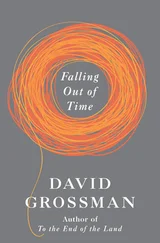David Kessler - No Way Out
Здесь есть возможность читать онлайн «David Kessler - No Way Out» — ознакомительный отрывок электронной книги совершенно бесплатно, а после прочтения отрывка купить полную версию. В некоторых случаях можно слушать аудио, скачать через торрент в формате fb2 и присутствует краткое содержание. Жанр: Триллер, на английском языке. Описание произведения, (предисловие) а так же отзывы посетителей доступны на портале библиотеки ЛибКат.
- Название:No Way Out
- Автор:
- Жанр:
- Год:неизвестен
- ISBN:нет данных
- Рейтинг книги:5 / 5. Голосов: 1
-
Избранное:Добавить в избранное
- Отзывы:
-
Ваша оценка:
- 100
- 1
- 2
- 3
- 4
- 5
No Way Out: краткое содержание, описание и аннотация
Предлагаем к чтению аннотацию, описание, краткое содержание или предисловие (зависит от того, что написал сам автор книги «No Way Out»). Если вы не нашли необходимую информацию о книге — напишите в комментариях, мы постараемся отыскать её.
No Way Out — читать онлайн ознакомительный отрывок
Ниже представлен текст книги, разбитый по страницам. Система сохранения места последней прочитанной страницы, позволяет с удобством читать онлайн бесплатно книгу «No Way Out», без необходимости каждый раз заново искать на чём Вы остановились. Поставьте закладку, и сможете в любой момент перейти на страницу, на которой закончили чтение.
Интервал:
Закладка:
The young man smiled with amusement as he pondered the irony of what was happening. He had been surprised when he heard about Andi Phoenix and her relationship with the woman who worked at the rape crisis center. It was a complete and utter coincidence. But an amusing coincidence nevertheless.
“However, the judge threw out the motion after some heated debate, culminating in a brief side bar.”
The young man considered going to the trial and sit there in the spectator’s section. But he realized that might be pushing his luck. There was however one aspect of the case that he wondered about. He had read a rumor on the web that this reporter and Alex Sedaka were in a relationship.
Monday, 17 August 2009 — 18:20
Alex was reading through the jury selection notes when he heard a knock on the door.
“Come in,” he said, not looking up.
The door swung open and Andi came stumbling into the room holding a computer print-out, unable to conceal the excitement on her face.
“I’ve got something that’ll knock your socks off!”
Alex looked up, responding to her mood as much as her words.
“Surprise me.”
“It’s about the representation of blacks on the jury.”
“You’re not still going on about that are you?”
“There’s been a new development.”
She was gushing now. Alex’s face remained skeptical, but he put his pen down to show that he was giving her his undivided attention.
“What about it?”
“I’ve checked the figures for jury selection in California for the last five years and guess what? The pattern holds. Blacks are under-represented on venire panels in many counties, not just Alameda.”
Alex thought to himself for a moment.
“What does that mean?”
“It means that jury panels in many counties have consistently under-represented blacks by a statistically significant amount. I can show you some charts to prove it.”
Over the next few minutes she showed Alex how blacks were under-represented not only on juries but also on venire panels before the voir dire. To Alex it was quite convincing, but he wasn’t ready to go off half-cocked — not yet at least.”
“Okay now let’s slow down here. First of all there are certain somewhat mundane factors that might have the effect of reducing the number of blacks on jury panels.”
“Such as what?” Andi challenged.
“For example, rightly or wrongly, a disproportionate number of blacks are incarcerated in penitentiaries and corrections institutes and jails. They’re ineligible to vote.”
Andi was shaking her head.
“I got the stats for that and used the statistical analysis software to hold constant for it.”
“Hold constant?”
“Factor it in. The imbalance is still there when you take it into account. Don’t forget I have the figures from the voting register as well as census data.”
“Wait a minute, you have to be careful how you handle the data. The voting register excludes people incarcerated for felony convictions, but those serving time for misdemeanors can still vote. However, they can’t serve on juries.”
Andi folded her arms and pursed her teeth.
“Please give me credit for a modicum of common sense. I held constant for all incarcerations, including pre-trial detention. The pattern still holds.”
“Pattern?”
“I don’t mean the size of the imbalance stayed constant. Obviously it was reduced when I held constant for those variables. But a statistically significant discrepancy remained.”
“Meaning in plain English that it was too big to be a — ”
“Random deviation? Exactly.”
“Okay but you base that on the assumption that the use of driver’s license records would be sufficient to plug the gap left by under-representation of blacks on the voting register. But not everybody drives. Some people use the bus.”
“The DMV also issues non-driver IDs.”
“But only to those who request them.”
“Come off it! There isn’t an eighteen-year-old in the State who doesn’t want to buy smokes or booze. And once they’ve got the ID, they’re registered at the DMV. And that makes them eligible for jury service.
Alex shook his head, not to argue but merely as he struggled to take it all in.
“Okay, hold on a minute, let’s rewind. First of all how are juries chosen?”
“We’ve been through that over and over: from voting registers and car license records. I think they use property tax records too.”
“No what I mean is, once they’ve got the records how do they make the actual selection?”
“Well nowadays it’s done by computer.”
“And how does the computer actually do it?”
“What do you mean?”
“I mean, according to what criteria does the computer make its decision?”
“It’s random! That’s the whole idea!”
“Yes,” Alex persisted, “but how does something as deterministic as a computer make a random decision?”
He was remembering a discussion with David not long ago. David had tried to explain to him about “pseudo-random behavior in deterministic systems.” Of course David’s area of interest was cosmology and sub-atomic particles. But the discussion had fascinated Alex, even if he hadn’t entirely understood what David had painstakingly set out to explain to him.
“Okay let’s say the Court needs 200 prospective jurors for that week,” Andi began. “And there are a 50,000 eligible people in the district or county. The computer divides a 50,000 by 200 and gets 250. That means they need to summon one person for every 250 in the district. So the computer chooses every 250 thname on the list.”
“That’s it?”
“Well no, not quite. If the computer just did that, then it would always choose the first person on the list and then all the other people at fixed intervals. So instead, what the computer does is it creates what’s called a ‘random offset.’”
“Random offset?” Alex repeated.
“Yes. What that means is that it picks a random number between one and 249. Then it counts that number in and picks that person as the first juror. So let’s say it picks the random number 187 as the random offset. What it does then is pick the 187 thperson on the list as its first selection and then pick every 250 thperson thereafter, until it gets to the end of the list.”
“Okay,” said Alex. “But how does a computer choose a random number in the first place? I mean isn’t everything in a computer mathematical and deterministic.”
He was remembering things that his son had told him.
“It uses something called keyboard latency.”
Alex was looking at her blankly.
“That means the speed at which the person at the keyboard types. What the software does is get the computer operator to type on the keyboard at random. It ignores what keys they press, because that might not be random, but it measures the time between keystrokes — or rather the differences in microseconds between one keystroke and another.”
“Okay.”
“But it doesn’t take the whole figure, it takes what it calls the least significant bit. That means like the last digit on the list of microseconds — that’s millionths of a second. Then the program uses this random input as the seed or initialization vector for the randomization algorithm that calculates a number between — in this case — one and two hundred and fifty.”
Andi paused to catch her breath. Alex paused to take it all in.
“But none of this explains why blacks are under-represented in this case,” said Alex.
“That’s exactly my point. If the software does its job properly, then they shouldn’t be. But all the stats I’ve looked at show that they are. That means that something’s going wrong.”
Читать дальшеИнтервал:
Закладка:
Похожие книги на «No Way Out»
Представляем Вашему вниманию похожие книги на «No Way Out» списком для выбора. Мы отобрали схожую по названию и смыслу литературу в надежде предоставить читателям больше вариантов отыскать новые, интересные, ещё непрочитанные произведения.
Обсуждение, отзывы о книге «No Way Out» и просто собственные мнения читателей. Оставьте ваши комментарии, напишите, что Вы думаете о произведении, его смысле или главных героях. Укажите что конкретно понравилось, а что нет, и почему Вы так считаете.












